As a creative and organized individual, you understand the importance of tracking time spent on content creation and distribution. Discover how the best time tracking software for content creators can help you take control of your workflow, optimize your processes, and produce high-quality content that engages your audience.
Key Takeaways
- Understand the benefits of time tracking for content creators.
- Learn how to effectively track time spent on different tasks.
- Identify areas for improvement in your content creation workflow.
- Optimize your processes to increase productivity and meet deadlines.
- Produce high-quality content that resonates with your audience.
Index:
- The Importance of Time Tracking for Content Creators
- Identifying Time-Consuming Tasks in Your Content Creation Process
- Implementing an Effective Time Tracking System
- Analyzing Your Time Tracking Data for Insights
- Leveraging Time Tracking to Produce High-Quality Content
- Conclusion
- Frequently Asked Questions
The Importance of Time Tracking for Content Creators
In the fast-paced world of content creation, where deadlines loom and the pressure to produce high-quality content consistently is ever-present, mastering your workflow is essential.
As a content creator, you juggle multiple tasks, from researching and writing to editing and promoting your work. Amidst this whirlwind of activity, it’s easy to lose track of time and find yourself wondering where the hours have gone.
- Understand your time allocation: Gain a clear picture of where your billable hours are being spent, identifying tasks that consume the most resources.
- Identify areas for improvement: Pinpoint time-consuming tasks that may be hindering your productivity and efficiency.
- Set realistic deadlines: With a better understanding of your work pace, you can establish achievable deadlines and manage your workload more effectively.
- Optimize your workflow: Use insights from your time tracking data to streamline your processes, eliminate bottlenecks, and boost your overall productivity.
But the benefits of time tracking extend beyond just optimizing your workflow. By dedicating more time to quality-driven tasks, such as thorough research, careful writing and editing, and collaboration with other experts, you can elevate the quality of your content.
Time tracking helps you prioritize these essential tasks, ensuring that your content resonates with your audience, establishes your authority, and drives engagement.
In this blog post, we’ll dive deep into the world of time tracking for content creators. We’ll explore strategies for identifying time-consuming tasks, implementing an effective time tracking system, analyzing your data for insights, and leveraging time tracking to produce high-quality content consistently.
Soon you’ll be equipped with the knowledge and tools necessary to master your content workflow and amplify your content creation power.
Join us as we uncover the secret weapon of the best time tracking apps. Get ready to take control of your time, optimize your process, and unleash your full content creation potential.

Boost Efficiency
Dive into a Free Trial Today!
Identifying Time-Consuming Tasks in Your Content Creation Process
Breaking Down the Content Creation Process
To identify the tasks that consume the most time in your content creation journey, it’s essential to break down the process into its constituent parts.
Planning and Research
- Brainstorming content ideas and topics
- Conducting keyword research to optimize for search engines
- Gathering information and data from reliable sources
- Outlining the structure and flow of your content
Writing and Creation
- Drafting the initial version of your content
- Developing engaging visuals, such as images, infographics, or videos
- Ensuring your content is well-structured, informative, and aligned with your target audience’s needs
- Incorporating storytelling techniques to captivate your readers
Editing and Refinement
- Revising your content for clarity, coherence, and readability
- Proofreading for grammar, spelling, and punctuation errors
- Optimizing your content for search engines with relevant keywords and meta tags
- Gathering feedback from beta readers or colleagues
Publishing and Distribution
- Formatting your content for the intended platform (e.g., blog, social media, email newsletter)
- Uploading and scheduling your content for publication
- Promoting your content across various channels to reach your target audience
- Engaging with your audience through comments, shares, and discussions
Performance Analysis and Optimization
- Monitoring your content’s performance using analytics tools
- Analyzing key metrics, such as views, engagement, and conversions
- Identifying areas for improvement based on audience feedback and data insights
- Continually refining your content strategy based on performance analysis
By breaking down your content creation process into these distinct phases, you can start to identify which tasks within each stage consume the most time. This understanding will serve as the foundation for implementing an effective time tracking system and ultimately optimizing your workflow.
Common Time-Consuming Tasks for Content Creators
Now that we’ve broken down the content creation process into its key stages, let’s take a closer look at some of the most common time-consuming tasks that content creators face. By identifying these potential time-sinks, you can begin to develop strategies for addressing them more efficiently.
Research and Information Gathering
One of the most significant time-consuming tasks in the content creation process is research and information gathering. It’s easy to fall down the “research rabbit hole” and spend hours exploring tangentially related topics, struggling to find reliable and relevant sources, or getting sidetracked by interesting but ultimately irrelevant facts or statistics.
Writing and Editing
Another common time-sink for content creators is the writing and editing process itself. Overcoming writer’s block, struggling to articulate complex ideas or concepts clearly and concisely, spending excessive time on perfectionism and endless revisions, or failing to maintain a consistent writing schedule can all contribute to a slower, less efficient content creation process.
Visual Content Creation
In today’s visually-driven digital landscape, creating engaging visual content is more important than ever. However, tasks such as learning and mastering new design tools or software, searching for high-quality, royalty-free images or video footage, creating custom graphics, infographics, or videos from scratch, and ensuring visual content is optimized for various devices and platforms can all consume significant amounts of time.
Promotion and Distribution
Once your content is created, the work isn’t over. Promoting and distributing your content across various channels is essential for reaching your target audience, but it can also be a significant time-sink. Managing multiple social media accounts, maintaining a consistent posting schedule, engaging with followers, researching and participating in relevant online communities, and developing effective email marketing campaigns all require a substantial time investment.
Administrative Tasks
Finally, don’t underestimate the time-consuming nature of administrative tasks related to content creation. Managing a content calendar, collaborating with team members or external contributors, responding to emails and comments, and tracking and analyzing content performance metrics can all eat up valuable time that could be spent on the actual creation process.

While some of these tasks are essential to the content creation process, they can quickly consume a disproportionate amount of your time if not managed effectively. The key is to identify which tasks are taking up the most time in your specific workflow and develop targeted strategies for streamlining or automating them.
For example, if research is a significant time-sink for you, consider developing a more structured research process, using bookmarking tools to save relevant resources, or collaborating with others to divide and conquer the information gathering stage.
If writing and editing are slowing you down, try implementing techniques like the Pomodoro Method to maintain focus and momentum, or use writing tools like Grammarly or Hemingway Editor to streamline the editing process.
Proactively addressing these common time-consuming tasks means you can free up valuable time and mental energy to focus on the most critical aspects of content creation: delivering high-quality, engaging, and impactful content to your audience.
Choosing the Right Time Tracking Tool
Selecting the right time tracking tool is crucial for effectively monitoring and optimizing your content creation process. While there are numerous options available, one tool that stands out for its comprehensive features and ease of use is Timesheets.com.
Timesheets.com is a powerful, web-based time-tracking solution that offers a wide range of features designed to help content creators streamline their workflow and maximize productivity. Some of the key advantages of using Timesheets.com include:

Intuitive Interface
Timesheets.com boasts a user-friendly interface that makes tracking time spent on various tasks, projects, and clients quite easy. The platform’s clean, intuitive design ensures that even those new to time tracking can quickly get up and running without a steep learning curve.
Comprehensive Time Tracking Features
With Timesheets.com, you can easily track time using a variety of methods, including a timer, manual entry, or even punching a clock. This flexibility allows you to choose the tracking method that best fits your work style and ensures accurate time records across all your devices.
Detailed Reporting
One of the standout features of Timesheets.com is its robust reporting capabilities. The platform generates detailed reports on time usage and team performance, providing valuable insights into your content creation process. These reports can help you identify areas for improvement, optimize resource allocation, and make data-driven decisions to enhance your overall productivity.
Payroll Integrations
Timesheets.com integrates seamlessly with a variety of popular accounting tools and platforms, including Quickbooks, ADP, Sure Payroll, and Excel. Eliminate that extra step with Timesheets.com so you can focus your time where it’s needed more.

When you choose Timesheets.com as your time and expense tracking tool, you’ll be well-equipped to monitor and optimize your content creation process effectively.
The platform’s comprehensive features, user-friendly interface, and powerful reporting capabilities make it an ideal choice for content creators looking to streamline their workflow and maximize productivity.
Best Practices for Accurate Time Tracking
Implementing a time-tracking system is only half the battle; the other half is ensuring that you and your team are using it consistently and accurately. Inaccurate or incomplete time-tracking data can lead to misleading insights and hinder your ability to optimize your content creation process effectively.
To ensure the accuracy and reliability of your time tracking data, consider adopting the following best practices:

Start and Stop Tracking Promptly
One of the most common mistakes people make when tracking time is forgetting to start or stop the timer when switching between tasks. To avoid this, make it a habit to start tracking time as soon as you begin working on a task and stop the timer immediately when you finish or switch to another task. Timesheets.com‘s intuitive interface and mobile apps make it easy to start and stop tracking with just a few clicks or taps.
Be Specific and Consistent with Task Descriptions
When tracking time, be as specific and consistent as possible when describing your tasks. Instead of using generic labels like “writing” or “research,” use more descriptive titles that clearly identify the project, deliverable, or client associated with the task. For example, “Draft blog post for Client X” or “Research keywords for Article Y.” Consistently using clear, specific task descriptions will make it easier to analyze your time tracking data and identify areas for improvement.
Track All Relevant Activities
To gain a comprehensive understanding of your content creation process, it’s essential to track all relevant activities, not just the core tasks of writing and editing. This includes time spent on research, ideation, outlining, fact-checking, formatting, and even administrative tasks like email communication or project management. By tracking a wide range of activities, you’ll be able to identify potential bottlenecks or time-sinks that may not be immediately apparent.
Avoid Multitasking
Multitasking is the enemy of accurate time tracking. When you try to juggle multiple tasks simultaneously, it becomes challenging to track time accurately and can lead to decreased productivity and quality of work. Instead, focus on one task at a time, give it your full attention, and track your time accordingly. If you find yourself frequently switching between tasks, consider using Timesheets.com‘s timer feature to track each task separately.
Review and Correct Time Entries Regularly
Despite your best efforts, there may be times when you forget to track time or make errors in your time entries. To maintain the accuracy of your time tracking data, make it a habit to review and correct your time entries regularly. Timesheets.com provides tools to edit or adjust time entries as needed so you can ensure your data accurately reflects your work.
Communicate and Collaborate with Your Team

If you work with a team of content creators, it’s crucial to communicate the importance of accurate time tracking and ensure everyone follows best practices. Encourage team members to track their time consistently, provide clear guidelines on task descriptions and categorization, and regularly review and discuss time tracking data as a team. By fostering a culture of accurate time tracking and collaboration, you’ll be able to gather more meaningful insights and optimize your content creation process more effectively.
By following these best practices and using Timesheets.com‘s intuitive time-tracking features, you can ensure the accuracy and reliability of your time-tracking data.
Analyzing Your Time Tracking Data for Insights
Key Metrics to Monitor in Your Time Tracking Data
Once you’ve implemented a time tracking system and established best practices for accurate data collection, the next step is to analyze your time tracking data for valuable insights.
Total Time Spent on Each Task or Project
- Monitor the total time invested in each content creation task or project.
- Identify which tasks or projects consume the most time.
- Compare the time spent to the value or impact of each task or project.
Average Time per Task or Project
- Calculate the average time spent on each type of task or project.
- Identify trends or patterns in time consumption across similar tasks or projects.
- Use this information to establish benchmarks and set realistic expectations.
Time Distribution Across Different Phases of Content Creation
- Analyze how your time is distributed across the various phases of content creation (e.g., research, writing, editing, promotion).
- Identify which phases consume the most time and resources.
- Determine if the time distribution aligns with your content creation goals and priorities.
Productivity Trends Over Time
- Monitor your productivity trends over daily, weekly, or monthly intervals.
- Identify patterns in your productivity levels (e.g., peak hours, slumps).
- Use this information to optimize your schedule and work habits for maximum productivity.
Time Spent on Non-Core Activities
- Track the time spent on non-core activities, such as administrative tasks, meetings, or email communication.
- Identify potential time-sinks or areas where you can streamline or automate processes.
- Determine if non-core activities are consuming a disproportionate amount of your time.
Comparison of Estimated vs. Actual Time
- Compare your initial time estimates for tasks or projects with the actual time tracked.
- Identify discrepancies between estimated and actual time.
- Use this information to refine your time estimation skills and improve project planning.
Team Management and Collaboration
- If working with a team, monitor individual and team performance metrics.
- Identify top performers and areas where team members may need support or training.
- Analyze collaboration patterns and time spent on communication or coordination.
Regularly monitoring these key metrics will give you a deeper understanding of your content creation process and identify opportunities for optimization.
Timesheets.com‘s powerful reporting features make it easy to access and analyze this data, providing you with the insights needed to make data-driven decisions and improve your content creation workflow.
Identifying Patterns and Trends in Your Data
With key metrics in hand, the next step is to identify patterns and trends in your time tracking data. By recognizing these patterns, you can pinpoint areas for improvement, optimize your content creation process, and make data-driven decisions to enhance your productivity. Here are 4 strategies for identifying meaningful patterns and trends:
Compare Time Data Across Different Projects or Clients
- Analyze time tracking data across different projects or clients.
- Identify which projects or clients consume the most time and resources.
- Determine if there are patterns in the types of tasks or challenges associated with specific projects or clients.
Examine Time Spent on Recurring Tasks or Activities
- Identify recurring tasks or activities in your content creation process.
- Analyze the time spent on these tasks over time to identify patterns or trends.
- Determine if there are opportunities to streamline, automate, or delegate recurring tasks to optimize your workflow.
Identify Bottlenecks or Roadblocks
- Examine your time tracking data to identify potential bottlenecks or roadblocks in your content creation process.
- Determine if there are specific tasks, phases, or dependencies that consistently slow down your progress.
- Develop strategies to address these bottlenecks, such as process improvements, resource allocation, or skill development.
Monitor Progress and Improvement Over Time
- Regularly compare your current time tracking data to historical data.
- Identify trends in your productivity, efficiency, or time allocation over time.
- Celebrate improvements and successes, and identify areas where further optimization is needed.
By leveraging Timesheets.com‘s reporting features, you can easily identify these patterns and trends in your time tracking data. The platform offers a range of customizable reports, allowing you to explore your data from various angles and uncover meaningful insights.
Review these reports regularly to analyze patterns and trends in your time tracking data. You’ll be well-equipped to make informed decisions, optimize your content creation workflow, and drive continuous improvement.
Translating Insights into Actionable Improvements

Prioritize High-Impact Improvements
Review the key insights and patterns identified in your time tracking data analysis. Prioritize the areas that have the most significant impact on your content creation process, such as tasks or projects that consume the most time, recurring bottlenecks, or opportunities for streamlining workflows. Focus on improvements that will yield the greatest return on investment in terms of time saved or productivity gained.
Set Specific, Measurable Goals
Translate your prioritized insights into specific, measurable goals for improvement. For example, if you identified that research tasks are consuming a disproportionate amount of time, set a goal to reduce research time by 20% over the next month. By establishing clear, quantifiable targets, you can track your progress and hold yourself accountable for implementing changes.
Develop Action Plans and Strategies
Create detailed action plans and strategies to achieve your improvement goals. Break down each goal into smaller, manageable steps and identify the specific actions required to accomplish them. Consider strategies such as process redesign, automation, delegation, or skill development to address identified inefficiencies or bottlenecks. Document your action plans and assign responsibilities and deadlines to ensure consistent implementation.
Implement Changes Incrementally
Implement your improvement strategies incrementally to minimize disruption and allow for continuous refinement. Start with small, manageable changes and gradually scale up as you gain confidence and see positive results. Regularly monitor your time tracking data to assess the impact of your improvements and make adjustments as needed. Celebrate successes along the way to maintain motivation and momentum.
Foster a Culture of Continuous Improvement
Encourage a culture of continuous improvement within your content creation team or organization. Regularly share insights and best practices derived from time tracking data analysis and engage team members in identifying and implementing optimization opportunities. Establish feedback loops and mechanisms for suggesting and evaluating improvement ideas and recognize and reward individuals who contribute to enhancing productivity and efficiency.
Use Technology and Automation
Identify opportunities to use technology and automation to streamline your content creation process. Utilize tools like Timesheets.com to streamline tracking, reporting, and analysis, freeing up valuable time for more strategic tasks. Explore content creation and project management tools that can help you automate repetitive tasks, collaborate more effectively, and optimize your workflows.
Continuously Monitor and Refine
Continuously monitor your time tracking data and assess the impact of your improvement strategies. Regularly review your progress against established goals and adjust your action plans as needed. Embrace a mindset of continuous learning and adaptation and be willing to experiment with new approaches and techniques to further optimize your content creation process over time.

Leveraging the insights derived from your time tracking data will help you translate patterns and trends into actionable improvements that drive meaningful, lasting change, as we’ll see in the next section.
Timesheets.com‘s intuitive platform and comprehensive reporting features provide the foundation for data-driven optimization, empowering you to continuously refine your content creation process and achieve new levels of productivity and success.
Unlock Productivity
Begin Your Free Trial Now!

Leveraging Time Tracking to Produce High-Quality Content
Leverage efficiency gains to produce high-quality content that truly resonates with your audience. By strategically allocating your time and focusing on the most impactful tasks, you can elevate the caliber of your content and achieve better results. Let’s explore how time tracking can help you achieve this:
1. Allocating Time for Quality-Driven Tasks
One of the key benefits of time tracking is that it helps you identify the tasks and activities that contribute most to the quality of your content. By analyzing your time data, you can determine which aspects of the content creation process have the greatest impact on the final product, such as:
- In-depth research to ensure accuracy and credibility
- Thorough outlining and structuring to create a logical flow
- Careful writing and editing to refine your message and voice
- Thoughtful selection and creation of visuals to enhance engagement
Allocating sufficient time for these quality-driven tasks ensures that you can produce content that is well-researched, thoughtfully crafted, and polished to perfection. Use your time tracking insights to prioritize these activities and dedicate the necessary resources to execute them effectively.
2. Collaborating with Experts and Content Creators
Collaborating with other experts and content creators can significantly enhance the quality and depth of your content. However, collaboration also introduces new challenges in terms of time management and coordination. Track your time spent on collaborative tasks, such as:
- Brainstorming and ideation sessions
- Content co-creation and review processes
- Coordination and communication with collaborators
You can identify opportunities to streamline these activities and ensure that your collaborative efforts are focused and productive. Use your time tracking data to establish clear expectations, set realistic deadlines, and allocate resources effectively when working with others.
3. Investing in Skills Development for Content Creation Excellence
Creating high-quality content often requires a diverse set of skills, from writing and editing to research, data analysis, and visual design. By tracking the time you invest in developing and refining these skills, you can ensure that you’re continuously growing as a content creator and staying ahead of the curve. Consider allocating time for:
- Attending workshops, webinars, or conferences to learn new techniques and best practices
- Engaging in self-study or online courses to deepen your knowledge and expertise
- Practicing and applying new skills through targeted projects or experiments
Tracking your skill development efforts alongside your content creation activities provides a holistic view of your professional growth and helps you make informed decisions about where to focus your time and energy. By investing in your skills, you can elevate the quality of your content and position yourself as a thought leader in your field.
4. Measuring and Analyzing Content Performance
Producing high-quality content is only half the battle; it’s equally important to measure and analyze how your content performs in terms of engagement, reach, and impact. Track the time you spend on tasks such as:
- Monitoring content metrics and analytics
- Gathering and analyzing audience feedback
- Conducting A/B tests and optimization experiments
You can gain valuable insights into what resonates with your audience and make data-driven decisions to improve your content’s performance. Use your time tracking data to prioritize these analysis and optimization activities, ensuring that you’re continuously refining your content strategy based on real-world results.
By leveraging time tracking to allocate resources strategically, collaborate effectively, invest in skills development, and measure content performance, you can create a virtuous cycle of continuous improvement that elevates the quality and impact of your content over time.
Conclusion: Mastering Your Content Workflow with Time Tracking
As a creative and organized content creator, you recognize the crucial role that time management plays in your success.

By implementing a robust time tracking system and leveraging the insights it provides, you can take control of your content creation process, optimize your workflow, and consistently produce high-quality content that resonates with your audience.
Imagine a world where you have complete visibility into how you spend your time, empowering you to make data-driven decisions and prioritize the tasks that matter most. Picture a content creation process that is streamlined, efficient, and optimized for maximum productivity and impact. For small businesses looking to streamline their content creation workflows, time tracking for small businesses with a tool like Timesheets.com can be a game-changer, providing valuable insights and tools to help you manage your time effectively.
Envision a workflow that allows you to focus on your core strengths, eliminates time-sinks and bottlenecks, and enables you to consistently deliver your best work.
This is the power of time tracking for content creators.
If you’re an executive assistant looking to streamline your workflow further, you may also want to explore time tracking for executive assistants.
Frequently Asked Questions

What is the easiest way to track time?

The easiest way to track time is by using a user-friendly, feature-rich time tracking tool like Timesheets.com You can start and stop timers with a few clicks, punch a clock, or enter time manually. You can also get basic functionality with a free time tracking app like Clockify.

What is the best app to keep track of work hours?

Timesheets.com is one of the best time tracking tools to keep track of work hours for content creators. The platform offers a comprehensive set of features designed to streamline time tracking and provide valuable insights into your content creation process.







